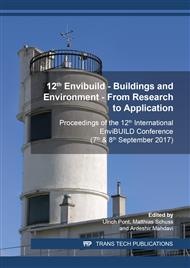p.219
p.227
p.237
p.247
p.255
p.264
p.273
p.282
p.292
Assessing Facility Maintenance Models for Data Centres: Status and Deficits of Current Facility Management and Maintenance Concepts
Abstract:
According to studies conducted by Information Technology (IT) analysts, the average cost per minute of IT equipment downtime is about $7,900, depending on the sector the company is active in. The average reported incident length is 86 minutes, resulting in average costs per incident of approximately $690,200 . This illustrates that failure in the operation and maintenance of Data Centre (DC) infrastructure has enormous impacts and consequences. Facility Management (FM) in data centres requires a broad and clear understanding of procedures and processes to avoid human errors and to ensure an economic and reliable operation of the clients’ primary activities. In the DC-industry, availability is the most important factor followed by economical aspects. Therefore, both research and implementation of stable processes with an optimal number of interfaces between IT related functions and FM are necessary to increase the effectiveness and efficiency. Therefore, this paper explains the settings of current FM and maintenance concepts used by the DC-industry. Furthermore, the need for a more innovative approach to ensure an economic and reliable operation of DC in the future is introduced. A special emphasis is on a review of the current status and deficits of facility maintenance und management concepts for DC providing direction for future research. It seems that maintenance has developed from an operational, technically-based activity to a strategically important management function.
Info:
Periodical:
Pages:
255-263
Citation:
Online since:
January 2019
Authors:
Price:
Сopyright:
© 2019 Trans Tech Publications Ltd. All Rights Reserved
Share:
Citation:


